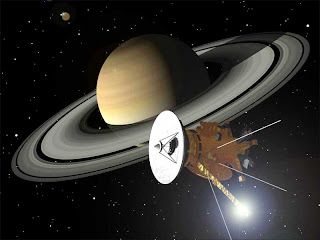Sky Watching
February 15
A near-Earth asteroid – called 2012 DA14 will pass very close to Earth
A near-Earth asteroid – called 2012 DA14 by astronomers – will pass very close to Earth on February 15, 2013. Astronomers estimate that, when it’s closest to us, it’ll be within the orbit of the moon (which averages about a quarter million miles away), and closer than some high-orbiting communications satellites. 2012 DA14 will be about 17,200 miles (27,680 kilometers) away. It will not strike Earth in 2013. Astronomers’ calculations of asteroid orbits can be trusted. After all, even decades ago, they knew enough about calculating orbits to send people to the moon and bring them safely back, and today we are able place our space vehicles in orbit around objects as small as asteroids.
February 16, evening twilight :
Mercury at greatest elongation east
This is the best opportunity this year for observers in the Northern Hemisphere to observe Mercury in the evening sky. Sweep the western horizon with binoculars to pick up Mercury’s tiny speck of light
PLANETS :
Mercury will be well placed in the western sky for most of the month, the best opportunity to see it as an “evening star” in 2013.
Venus is now very low in the southeast at sunrise
Mars has faded into the west moving behind the sun. It rapidly crosses the entire constellation of Aquarius this month
Jupiter remains in Taurus, close to Aldebaran and the Hyades. It is high in the southern sky in the early evening and sets in the northwest around 2 a.m.
Saturn is spends the month in western Libra. It rises in the east at around midnight, and is visible the rest of the night.
Uranus is visible in Pisces in the early evening and sets around 9 p.m.
Neptune is in Aquarius all month, becoming lost in the twilight close to the sun
www.hubblesite.org/explore_astronomy/tonights_sky
Posted by Unknown
|
at
20:32
|
Picture Of The Day
2013, February, 5
(Hubble Infrared Image of Area Surrounding Hanny's Voorwerp)
Posted by Unknown
|
at
19:54
|
Astronomy Quiz
- What percentage of the universe is hidden from view by dust and stars?
Ans : 20.
- What does the name of the constellation Scutum mean in English?
Ans : shield
- Where in the Solar System would you find "Alba Patera"?
Ans : Mars
Alba Patera, found on Mars, is a peak at a height of 1,600m and a diameter of 464km.
- Which space probe was the first to cross the asteroid belt?
Ans : Pioneer 10.
- What is the name of the cloud that marks the edge of the Solar System?
Ans : Oort cloud.
- What were the names of the two dogs carried into space by Sputnik 5?
Ans : Belka and Strelka
- How many times more luminous is the Milky Way compared to our Sun?
Ans : 14 billion times.
- Which is the smallest planet among the gaseous giants?
Ans : Neptune
- A type of neutron star is called a:
Ans : pulsar.
- Spike-like columns of gas that jet out from the sun's chromosphere are called:
Ans : Spicules.
- Who experimentally discovered the relationship between redshift and distance within the universe?
Ans : Hubble
Edwin Hubble, 1889-1953, discovered the true meaning of redshift and first confirmed experimentally that the universe was expanding.
Posted by Unknown
|
at
19:48
|
Picture Of The Day
2013, January, 22
(Light Echo From Star V838 Monocerotis )
Posted by Unknown
|
at
22:02
|
Sky Watching
January, 2013
Mercury will be too close to the sun for observation this month.
Venus is now low in the southeast at sunrise, heading towards superior conjunction with the sun on March 28.
Mars has faded into the west moving behind the sun. It moves from Capricornus into Aquarius on January 29.
Jupiter remains in Taurus, close to Aldebaran and the Hyades. It is high in the eastern sky at sunset and sets in the northwest around 3 a.m.
Saturn is spends the month in western Libra. It rises in the east at around 1 a.m., and is visible the rest of the night.
Uranus is visible in Pisces in the early evening and sets around 10 p.m.
Neptune is in Aquarius all month, becoming lost in the twilight close to the sun.
Posted by Unknown
|
at
21:52
|
Picture Of The Day
2013, January, 5
(Three Moons Cast Shadows on Jupiter)
Posted by Unknown
|
at
02:01
|
Planets Visited By Spacecraft
Venus :
Mariner 2 ( USA) flyby 1962
Venera 4 (USSR) landed 1967
Messenger (USA) flyby 2006, 2007
Mars :
Mariner 4 (USA) flyby 1965
Mars pathfinder (USA) landed 1997
Orbiter (USA) in orbit 2006
Jupiter :
Pioneer 10 (USA) flyby 1973
Galileo (USA) landed 2003 ( Deliberately destroyed entering Jupiter's atmosphere, rather than risk contaminating moon Europa with bacteria from Earth)
New Horizons (USA) flyby 2007
Mercury :
Mariner 10 (USA) flyby 1974
Messenger (USA) flyby 2008, 2009 scheduled to orbit 2011
Saturn :
Pioneer 11 (USA) flyby 1979
Cassini/ Huygens (USA/ESA) orbiter/lander 2004/2005
Uranus :
Voyager 2 (USA) flyby 1986
Neptune :
Voyager 2 (USA) flyby 1989
Pluto :
New Horizons (USA) scheduled flyby 2015
Posted by Unknown
|
at
01:55
|



.jpg)
.jpg)



.jpg)
.jpg)
.jpg)
.jpg)





















